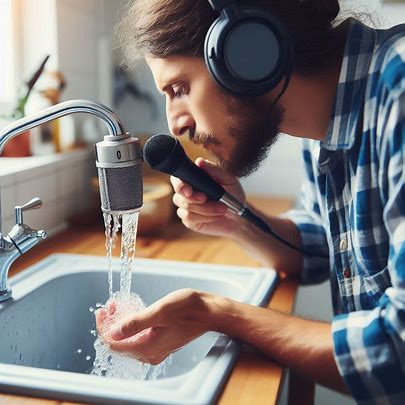Soundscapes of Plumbing: Turning Pipes into Music and Art
Water rushing through copper pipes creates more than just background noise. Those gurgles, hums, and echoes carry a rhythm. A hidden melody. Artists and musicians are starting to see—and hear—the potential in everyday plumbing sounds. They are using these often-ignored noises as the building blocks for audio compositions and visual inspiration.
What was once dismissed as household white noise is now making its way into studios and galleries. Musicians record the drip of a leaky tap or the reverberation of water flowing through radiators. These sounds become the raw materials for electronic tracks, experimental compositions, or ambient soundscapes. Even plumbing professionals like plumbers in Arlon can attest to each pipe and fixture’s distinct identity, depending on the age, materials, and location. It’s like each home has its own secret song (source: plombier arlon).
Plumbing as a Source of Inspiration
 Think of a water heater kicking on in the basement. The low hum, followed by a subtle whoosh. Or the rhythmic knocking of a pipe expanding as hot water courses through it. These aren’t just random sounds—they’re patterns. For a trained ear or a creative mind, they can serve as loops, samples, or thematic elements in a larger artistic piece.
Think of a water heater kicking on in the basement. The low hum, followed by a subtle whoosh. Or the rhythmic knocking of a pipe expanding as hot water courses through it. These aren’t just random sounds—they’re patterns. For a trained ear or a creative mind, they can serve as loops, samples, or thematic elements in a larger artistic piece.
Visual artists have also found themselves inspired by these soundscapes. The idea of motion, flow, or pressure is often translated into abstract paintings or installations. Some even build sculptures using plumbing components that respond to vibrations or sound, blurring the line between form and function.
Recording the Unseen Symphony
Capturing plumbing sounds isn’t as straightforward as recording a guitar riff. It requires exploration and often a bit of improvisation. Contact microphones, hydrophones, and even smartphones are used to pick up the subtle creaks and flows within the walls. The recordings are then manipulated—stretched, pitched, or layered—to highlight their hidden textures.
Sound artist and experimental composer Cathy Lane once described her fascination with “domestic sound environments,” noting how they offer a sense of place and emotional tone. Plumbing sounds, in particular, create an intimate and industrial atmosphere. That tension is part of what makes them so compelling.
Plumbing in Live Performance
Some musicians have gone a step further. They don’t just sample plumbing sounds—they bring plumbing systems into their live shows. Modified pipes become percussion instruments. Water-filled basins with hydrophones allow performers to create ripples and swirls that feed directly into amplifiers.
One well-known project involved converting a network of pipes in an old warehouse into a playable installation. Audience members were invited to interact with valves and taps, producing music by altering water flow and pressure. It turned a passive experience into an active, participatory piece of art.
Blurring Boundaries Between Art and Environment
What makes plumbing sound unique is its connection to daily life. Unlike traditional instruments or studio-produced samples, these noises exist naturally around us. They remind us of our homes, routines, and physical connection to water and infrastructure.
By using plumbing as inspiration, artists challenge the idea that creativity must come from traditional sources. They invite us to listen more closely to our surroundings and find beauty in what we usually ignore. The clang of a loose pipe or the groan of an old boiler suddenly becomes a creative prompt rather than a nuisance.
A New Genre of Sound Art
This growing niche of sonic experimentation is carving out space in museums and sound festivals. Curators are beginning to appreciate the raw, unpredictable nature of these compositions. They reflect not just artistic expression but environmental storytelling—capturing the voice of the infrastructure we live with every day.
Whether a city apartment or a rural cottage, every building has its own plumbing voice. Some whisper. Others shout. But they all have a story to tell if we’re willing to listen.
READ ALSO: A Visual Symphony: The Evolution and Effect of Music Videos
Final Thoughts
Turning plumbing noise into music might sound strange at first. But it’s a reminder that inspiration doesn’t have to be distant or rare. Sometimes, it’s running right through the walls. By tuning into the rhythm of pipes and the chorus of flowing water, artists are not just making music—they’re changing how we hear the world around us.
So next time your faucet drips, or your pipes creak, don’t be too quick to call for a repair. You might be standing next to the next great symphony.